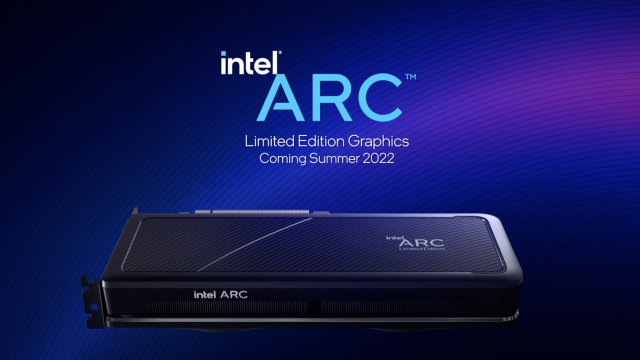This site may earn affiliate commissions from the links on this page. Terms of use.
In last week’s quarterly earnings call, Intel CEO Pat Gelsinger mentioned something we all kind of knew was the case: Its Arc drivers are not up to snuff. Because of this, the company will not meet its previous goal of shipping four million Arc GPUs to gamers in 2022. Who could have seen this coming? Aside from, you know, everyone?
Backing up a bit, in January Intel graphics Chief Raja Koduri responded to a tweet from PC Gamer imploring Intel to deliver Arc GPUs immediately. Back then, we were still in the grips of the GPU shortage, and COVID-19 was still causing mayhem. It was expected that Arc GPUs would be arriving shortly, and PC Gamer had seen this as the perfect solution to the GPU shortage. Indeed, if Intel had dropped its GPUs back then, at affordable prices, it would have had the market all to itself. Raja tweeted, “@IntelGraphics is working hard to find a path towards the mission – getting millions of Arc GPUs into the hands of PC gamers every year.” As it turns out, reaching that goal would be harder than Intel anticipated.

Someone should submit this to /r/agedmilk
According to a transcript of the call from Tom’s Hardware, Gelsinger pinned the blame on its drivers. The main issue, shockingly, is the company figured it could just tweak the drivers it was already using for its iGPUs on Intel CPUs. As it turns out, that did not work, at all.
“Our software release on our discrete graphics was clearly underperforming,” Gelsinger said. “We thought that we would be able to leverage the integrated graphics software stack, and it was wholly inadequate for the performance levels, gaming compatibility, etc. that we needed. So we are not hitting our four million unit goal in the discrete graphics space, even as we are now catching up and getting better software releases.”
Despite the setback, Gelsinger remains optimistic about Arc’s future. “While we will not hit our GPU unit target, we remain on track to deliver over $1 billion in revenue this year,” he said. “COVID-related supply chain issues and our own software-readiness challenges caused availability delays that we continue to work to overcome. Intel Arc A5 and A7 desktop cards will start to ship in Q3.” Ah yes, “software-readiness challenges,” that old bugaboo. Back when Intel announced one of the earlier delays, it had blamed “software readiness delays.”
It’s remarkable Intel figured it could just tweak its existing software stack for an entirely new GPU lineup. Like most shortcuts, instead of saving the company time, it just made the problem worse. Still, it sounds like Intel has figured out what went wrong, so hopefully it’s full steam ahead now. Drivers seem like Intel’s Achilles heel for Arc, however. It not only has to compete against AMD and Intel’s hardware on performance but on software. That’s no small feat, as both companies have been refining their software packages for years now. Not only that but both Adrenaline and GeForce offer many ancillary features, such as Radeon Noise Suppression, Nvidia’s Ansel, RTX Voice, and Shadowplay.
We’ll find out soon enough whether Intel has fully baked its drivers. The company recently said the launch of Arc in the US is “now in sight.” This follows it saying it would be launching “later this summer,” which should mean soon. Ahead of its launch its PR reps have been making the rounds as well to explain Arc’s features and capabilities. Pricing and availability are still the big unknowns.
Intel is also facing an unprecedented market situation, with tons of GPUs languishing on virtual store shelves. How that will affect Arc’s launch is anyone’s guess. Many gamers will hold off on buying an Arc GPU, at least at first, because AMD and Nvidia will be unveiling next-gen GPUs soon. Once that occurs, we will have a rare event on our hands: a three-way battle for GPU supremacy. At this point, Intel is clearly the underdog.
Now Read:
Source by www.extremetech.com






























